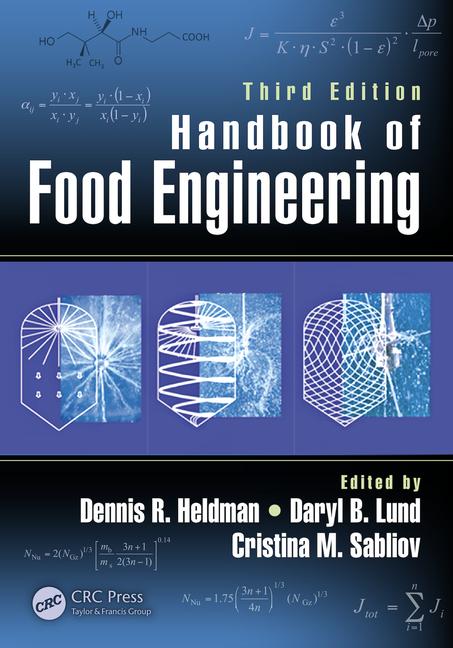
Reverse-osmosis specialists Dan Lingen and Wes Byrne inspect the off-site membrane cleaning station they designed and developed. Source: US Water Services.

Wes Byrne, equipment group research and support, US Water Services, Plymouth, MN. Source: US Water Services.
Wes Byrne, a member of US Water Services’ equipment group, has been involved in the design, engineering and maintenance of R/O and other water treatment systems for 30 years. He is an adjunct professor at St. Cloud (MN) Technical College, where he oversees online instruction in high-purity water treatment, and also offers personal skills training through the Company for Educational Advancement, which he founded. Byrne graduated from Purdue University in 1979 with a bachelor’s degree in chemical engineering, then earned a master’s degree in secondary education, focusing on chemistry, from the University of St. Thomas in St. Paul, MN. In 1989, he founded American Fluid Technologies Inc., which eventually was acquired by Ecolab Inc.
Byrne has serviced hundreds of R/O systems worldwide and has helped develop new applications in several different markets, including food and beverage. He recently discussed the technology’s development and some of the design, installation and operational mistakes he encounters.
FE: How long have you been involved in the design and maintenance of reverse-osmosis systems?
Byrne: It wasn’t really discussed during coursework in chemical engineering at Purdue, so I knew nothing about the technology until my first job as a facility engineer at Hewlett Packard, when I had to make a system work. The early hollow fiber membrane elements didn’t work well with surface water sources, but spiral-wound elements came into use on the West Coast in the semi-conductor industry. That helped demonstrate the technology’s viability. When FilmTec launched the polyamide thin-film composite membrane in the early ‘80s, it demonstrated the improved salt removal and energy efficiency that launched the technology into the mainstream.
FE: Where have you focused your development work in recent years?
Byrne: I helped develop a chemical alternative to sodium bisulfite that incorporates ammonia into the chlorine reaction. Unstable chloramines in the free chlorine prevent biological growth while reducing the potential for chlorine attack on the membranes. In the right applications, it’s an excellent solution to R/O bio-fouling problems.
FE: Are the newer polyamide thin-film membranes tolerant of small amounts of chlorine to reduce biological fouling?
Byrne: Some membrane suppliers claim their membranes can tolerate 1 ppm of chlorine over 1,000 hours before a doubling of salt passage occurs, but any amount of chlorine will cause damage, and the damage is cumulative. If iron or other transition metals have fouled out the membrane, the damage will be worse.
To reduce chlorine concentrations, sodium bisulfite often is added, but this chemical also reacts with dissolved oxygen in water. Reducing oxygen increases the potential for anaerobic growth, which leads to heavy slime formations that rapidly foul the system. A symptom of this is the rotten-egg odor of sulfur dioxide when membrane vessels are opened.
FE: How broadly is R/O used in food and beverage manufacturing?
Byrne: Reverse osmosis was an easy technology to apply when replacing ion exchange processes for water purification. It’s commonly used when making bagged ice, for example, to remove any particles or dissolved salts that would make the cubes look cloudy. All the major soft-drink companies have standardized on R/O to produce a consistent, low sodium product, regardless of where the plant is located. And we’re seeing continued interest in using R/O to treat feed water for boilers.
Manufacturers with low-pressure boilers have come to rely on ion-exchange softening and chemicals to prevent scale formation in boiler water. Depending on the condensate returned to the unit, they might have to continually blow down 20% or more of the heated water and replace it with fresh water. By applying R/O, companies have gone from as few as 2.5 cycles to as many as 50 cycles. The reduction in heating and chemical costs can result in a payback of less than a year. Unfortunately, awareness of potential savings still lags, and because of the outsourcing of knowledge, many companies are reliant on their chemical suppliers for advice on improving boiler performance.
FE: Have R/O systems become more efficient in terms of the amount of so-called brine water rejected during treatment?
Byrne: The technology hasn’t changed that much. Whether a system rejects one quarter or half of the input has more to do with the value of water in a particular location and the cost of discharging the rejected water. If there are tight limits on the amount of contaminants in the rejected water, you may find R/O systems running at relatively low recovery rates of purified water. In an area like the Southwest, where treated sanitary effluent may be used for irrigation, there may be strict limits on the amount of dissolved salts in the rejected water.
One of the biggest changes is in the pretreatment systems. An R/O system can’t be backflushed, but some microfiltration and ultrafiltration membrane configurations can be used for pretreatment and are back-flushable. These membrane systems take a lot of the burden off the R/O system.
FE: What are the most common problems encountered with R/O?
Byrne: Inadequate pretreatment of the feed water is the most common cause of a complete failure. Even when a catastrophic event doesn’t occur, compromises in pretreatment methods, monitoring instrumentation or equipment quality usually result in excessive fouling or other operational problems.
For example, using the same flow control orifice on a multimedia filter discharge line to control both the filter backwash flow rate and the rinse flow rate after backwashing is a common compromise. Rinsing with a flow rate intended for backwashing will compact the media granules under a pressure drop exceeding 15 psid and push any suspended particles in the upper section of the media filters deeply into the media bed. Much of the solids that are then shed by the filters while in service are likely to end up in the R/O cartridge prefilters and the membrane elements.
FE: How common is R/O fouling, as a consequence of inadequate pretreatment?
Byrne: It’s all over the board and is somewhat dependent on how much pressure exists to operate systems as cheaply as possible. For example, ethanol processors don’t know if they’re going to be profitable in a couple of years, and they don’t want to spend a lot up front on pretreatment. Systems can be chemically cleaned when they foul. That’s usually a labor-intensive process and requires downtime. And each time you clean the system, it typically loses a little performance until it permanently fouls. Failure isn’t catastrophic, but it snowballs over time.
The success of a system often is determined by the success of its pretreatment. It’s a simple concept, but pretreatment often gets compromised. People assume the raw water quality is better than it is. Pilot studies are the only way to be sure pretreatment is adequate in a specific application.



